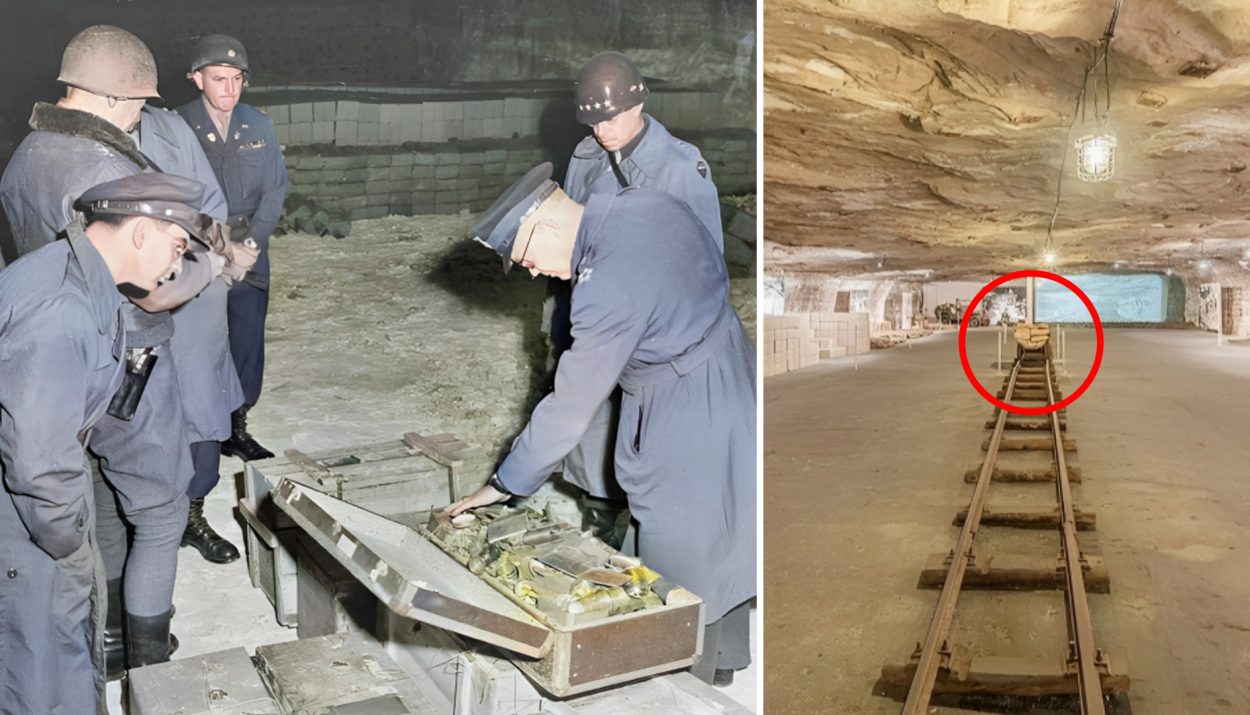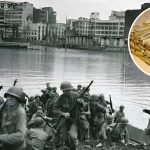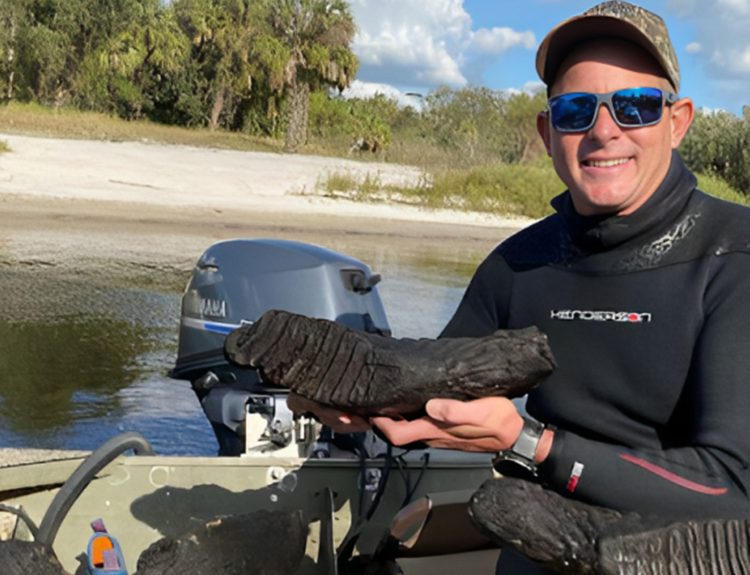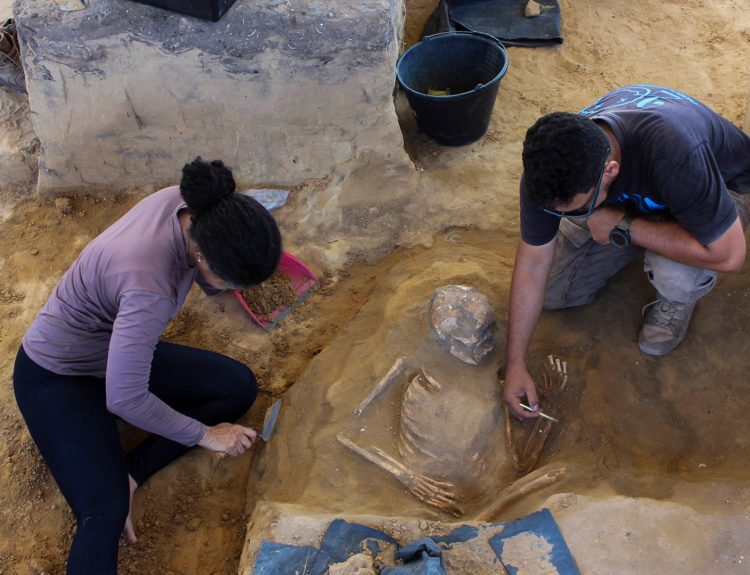One of the most significant discoveries in the closing days of World War II was the discovery of hidden Nazi gold. The secret stash of gold was squirreled away as Allied Forces advanced into German territory in hopes that it could be retrieved later and used to finance a rebirth of the Nazi regime.
The discovery of the Nazi gold is just the tip of the story. How did the Nazis acquire this gold? How much gold did they have? Where did they hide it? How was it found? Let’s explore the story of the hidden Nazi gold stash of World War II.
Gold-Hungry Looters
During World War II, Nazis worked to collect all the gold they could find. Nearly all of it was stolen. The Nazis looted the national banks of the countries they invaded, removing the gold reserves. The national gold reserves of Belgium, the Netherlands, Austria, and Czechoslovakia all ended up in the Nazi coffers.
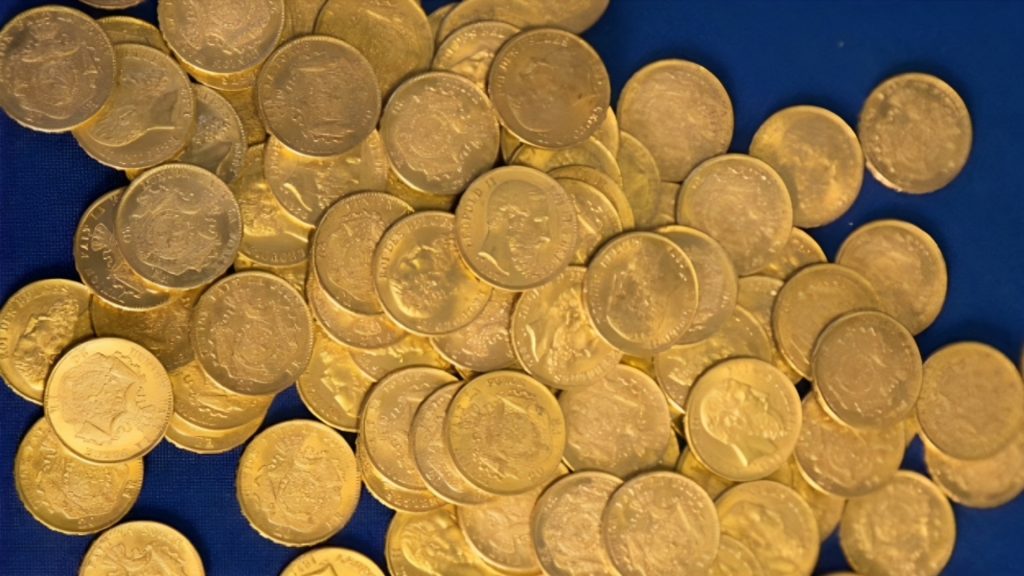
Nazi looters didn’t stop there. They also raided the homes of wealthy and prominent residents in the cities they seized, appropriating the gold and other valuables. Assets owned by the Jews they captured were also stolen. The gold-hungry Nazis even yanked off gold wedding rings and pulled out the gold fillings of Jews in concentration camps.
Financing the War Effort
The gold and other valuable items that the Nazi looters took were used to finance their war effort, building projects, and scientific research. Historians have noted that the Nazis would have needed to convert the gold into currency in order to purchase weapons, aircrafts, and tanks.
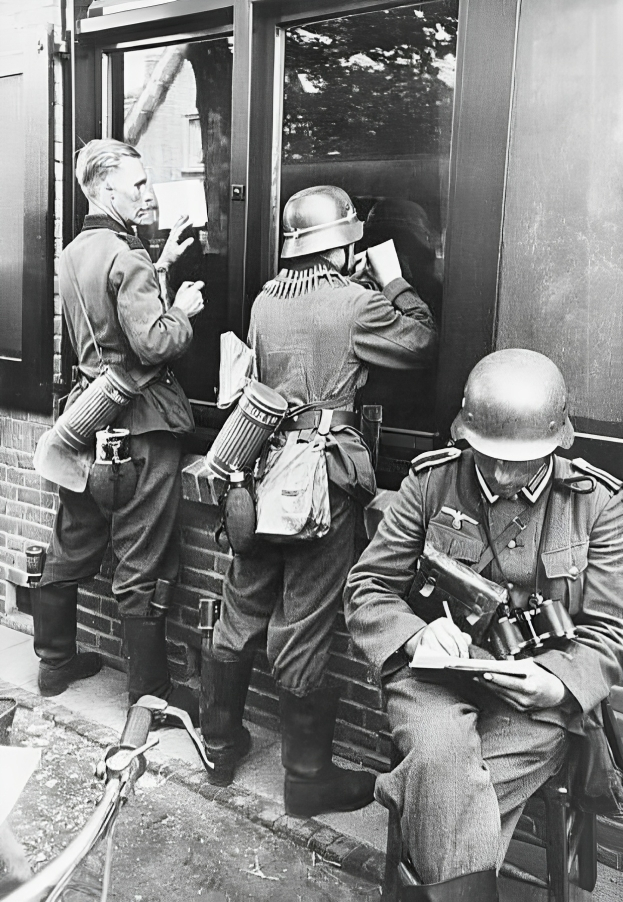
To convert the gold to currency, the Nazis relied on foreign banks. But since these financial institutes didn’t want their dealings with the Nazi Party to be public knowledge, the transactions were done discreetly and with no paper trail. This was not an easy or convenient process, so the Nazis retained large amounts of gold in their possession, waiting to be converted.
General George S. Patton and the U.S. Army
Allied troops advanced into German territory in April 1945. With them was the U.S. Army’s 90th Infantry Division under the command of General George S. Patton. Patton and his men marched into the Merkers area in Thuringia.

The Allied troops had heard rumors that the Nazis were hiding a cache of gold, they did not know where. They had no way of knowing that a trove of golden treasure was hidden nearby. They may not have found the secret stash had it not been for a chance encounter with a very pregnant French woman and her friend.
Sharing an Astonishing Secret
When the Allied forces invaded Merkers, they set up their encampment. Military police officers were assigned to stand guard outside the encampment to keep civilians from entering. One evening, two American MPs were standing guard when they learned a fantastic secret.
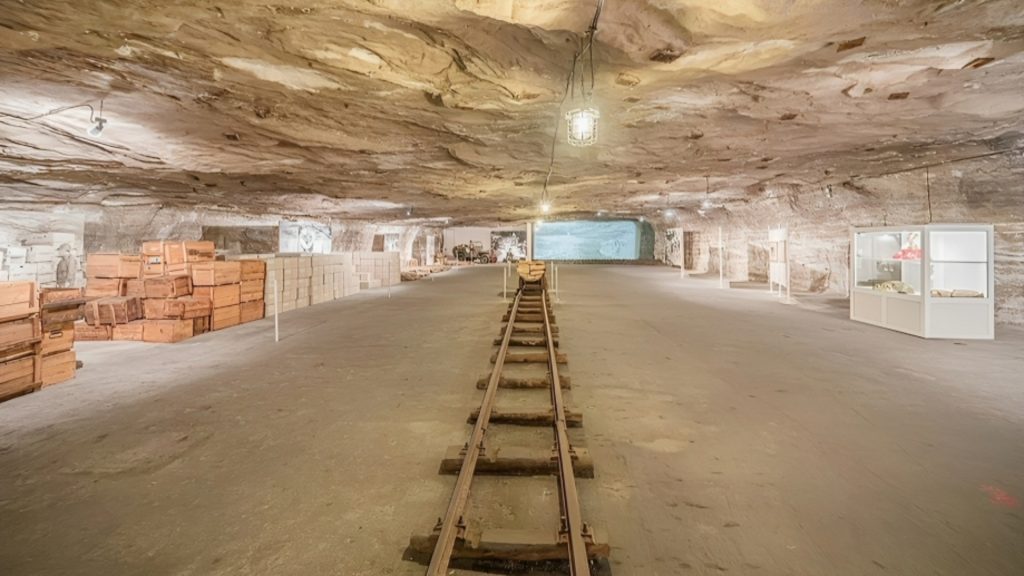
Two displaced French women approached the MPs. One of the women was heavily pregnant and in need of medical help. The women were allowed in. They informed the U.S. troops that they overheard the Germans talking about hiding gold in an abandoned mine. The Germans, the women said, spoke freely in front of them because they didn’t realize the women could speak German as well as French.
The Merkers Salt Mines
The information shared by the French women was passed up the ranks to the Allied commanders. They ordered Allied soldiers to investigate the unused salt mines in the area. To their astonishment, they uncovered the hidden repository for the Nazis’ ill-gotten gold and treasured items.

Much of the treasure was in bags stacked against the walls of the mine, however the soldiers noted that a newly erected brick wall blocked off a portion of the mine. The brick wall had a thick steel door with a bank-vault-like lock. On April 8, 1945, the Allied troops blasted through the three-foot thick wall to reveal the massive treasure.
Six Years of Looting
The treasure trove that was discovered in the Merkers salt mines included artifacts and items looted over a six-year period of World War II. The sheer scale of the hidden treasure underscored the systematic plundering orchestrated by the Nazis during their occupation of Europe.
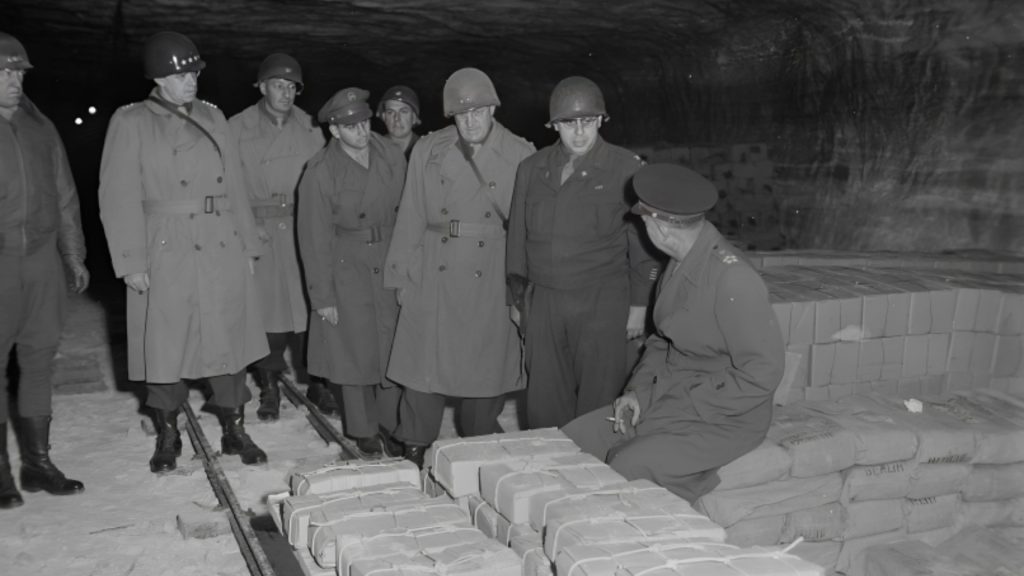
The cache of Nazi gold was so large and impressive that both General Patton and General Dwight D. Eisenhower visited the Merkers salt mine to inspect the find. The Nazi had filled the chambers in the mine shafts with gold, in addition to priceless artworks, jewels and precious gems, and other valuable artifacts.
How Much Gold Was Hidden in the Merkers Salt Mines?
The sheer volume of gold hidden in the Merkers salt mines is mind boggling. The stolen gold was in the form of gold bars, bullion, and coins, in addition to stolen Jewish wedding rings and other personal gold items. In all, the stash of gold weighed several thousand tons.
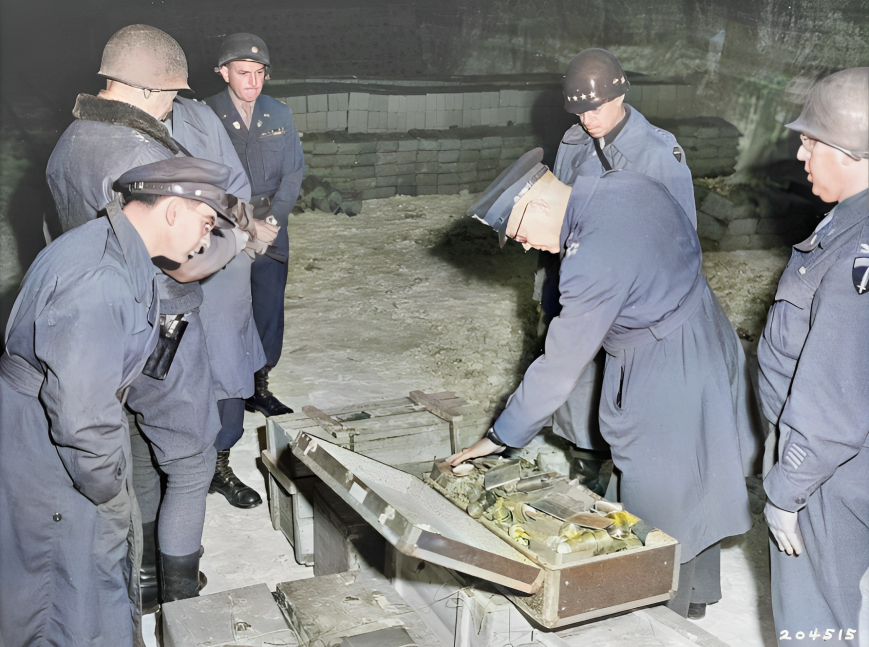
Allied troops found more than 8,300 gold bars, along with eight bags of gold wedding rings and more than 3,300 bags of gold coins. The Nazis had also hidden more than 3,500 bags of German money and roughly 80 bags of foreign currency. Jewelry, precious gems, and hundreds of pieces of art were also recovered.
A Million Dollar Discovery
Historians have estimated that the gold, silver, and currency discovered in the Merkers salt mines were worth well over $550 million. Many of the gold bars and bullion still had the stamp marks to indicate which nation’s national reserves they were stolen from.
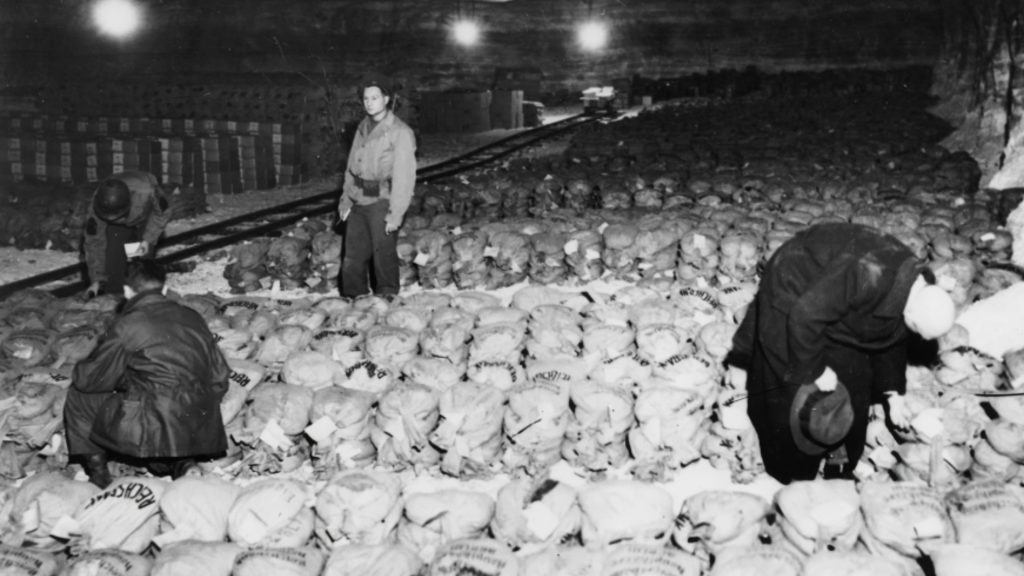
As amazing as this amount is, many historians believed that the cache found in the Merkers salt mines represented only a small percentage of the gold stolen by Nazi looters. What happened to the rest of the gold? There are rumors of other hidden caches across Europe and even stories about treasure chests hidden in the alpine lakes of Europe.
What Happened to All that Gold?
The excitement over the discovery of the hidden Nazi trove at Merkers salt mines was dampened by the realization that the personal effects, dental fillings, and even the wedding rings were stolen from inmates at the Nazis’ horrific concentration camps. These items could not be returned to their rightful owners.
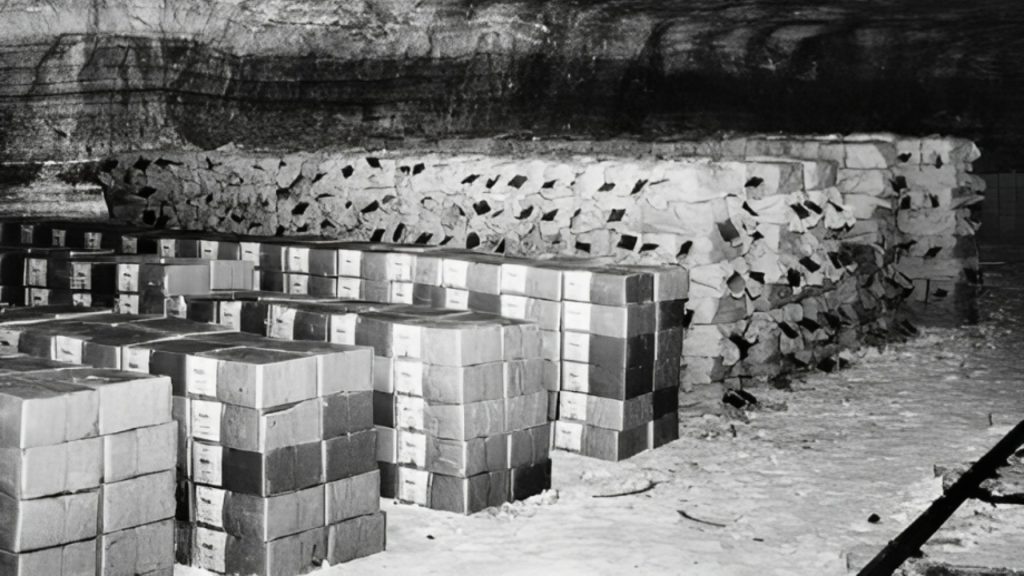
At the conclusion of World War II, most of the recovered gold was divided between the three members of the Tripartite Gold Commission … the United States, Great Britain, and France. Holocaust survivors often sought to reclaim items stolen from their families.

